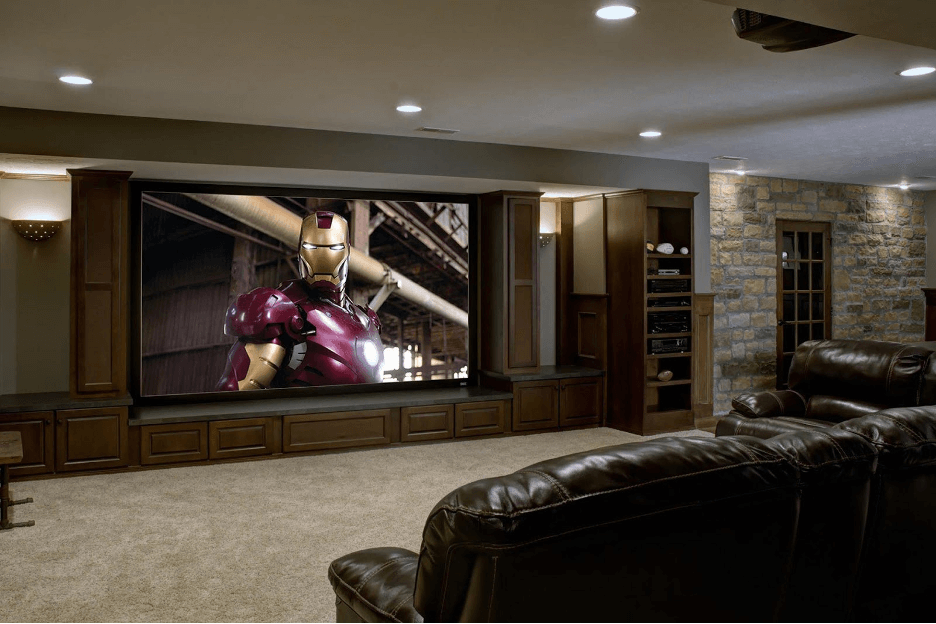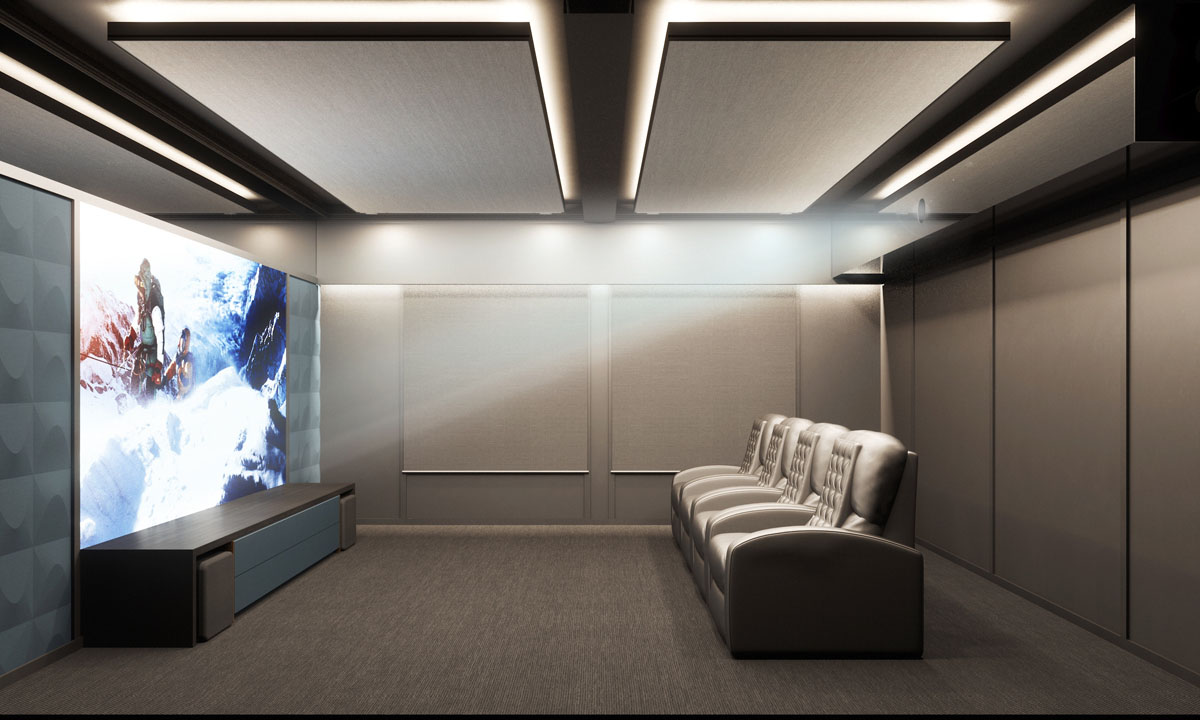Home Theater 101: Everything You Need to Know for a Cinematic Experience in the house
Developing a home theater that equals the motion picture experience of an industrial theater entails cautious factor to consider of numerous parts, including screen choice, sound systems, and room design. Whether you are contemplating the excellent screen dimension or the complexities of border audio, understanding these fundamentals is important.
Choosing the Right Screen
When establishing a home movie theater, selecting the best display can make or damage the watching experience - tampa home theater installation. The display offers as the centerpiece of your arrangement, affecting photo high quality, seeing angles, and general aesthetic. Secret aspects to take into consideration consist of screen type, size, and resolution
First, figure out the appropriate screen dimension based on your room measurements and seating distance. Next, pick in between various screen types, such as fixed-frame, mechanized, or retractable displays, each offering distinctive advantages.
Resolution is another critical aspect. For a truly immersive experience, think about a display created for 4K or even 8K web content, making certain sharpness and quality. Additionally, take into consideration the screen's gain, which influences illumination and contrast; a higher gain can boost illumination in well-lit areas, while a reduced gain may be more ideal for darker atmospheres.
Selecting Audio Equipment
Audio equipment is an important component of any type of home movie theater system, substantially improving the overall watching experience. The choice of audio gear can identify the deepness, quality, and immersion of sound, critical for creating a cinematic ambience.
When picking audio tools, think about a surround stereo, which normally includes a receiver, multiple audio speakers, and a subwoofer. A 5.1 or 7.1 channel system is recommended, where the very first number represents the speakers and the 2nd the speaker, supplying an immersive soundscape. The receiver is the heart of the system, handling sound and video signals, and ought to support modern-day styles like Dolby Atmos for a boosted spatial experience.
Quality audio speakers are necessary; seek models that use a balanced noise profile with good bass response. Floor-standing audio speakers can generate richer audio, while shelf options save space. Additionally, think about cordless choices for ease of setup, although wired systems often supply exceptional efficiency.

Ideal Seating Arrangements
Developing a perfect home theater experience hinges significantly on optimum seating setups. The setup of seats plays a crucial duty in both comfort and viewing top quality, straight affecting the overall cinematic experience.
First, consider the display size and checking out distance. A common guideline is to place seats at a range about 1.5 to 2.5 times the angled size of the screen. This guarantees an immersive experience without stressing the eyes.
Following, elevation is vital. The back rows must be greater than the front to avoid blockages if your seating is in a tiered layout. For flat seating, ensure that the front row is not also near to the screen, and that every person has a clear view.
In addition, think about the plan in terms of social characteristics. Group seats can boost the public experience, while specific seats might be chosen for individual viewing.

Last but not least, prioritize convenience with ergonomic seats that supports prolonged watching durations. Integrating reclining chairs or supported seats can substantially improve the experience, making the home theater a preferred destination for both enjoyment and leisure.
Lighting and Ambiance
Efficient illumination and atmosphere are essential elements of a properly designed home cinema, as they dramatically influence the seeing experience. The appropriate lighting can boost the motion picture feeling, while bad selections can interfere with it. For optimum results, think about a layered lights strategy that consists of ambient, job, and accent lighting.
Ambient lighting offers basic lighting, guaranteeing that the room is not entirely dark, which can stress the eyes. Dimmer switches are highly recommended, permitting for adjustments based upon the web content being seen. Job lights, such as wall surface sconces or click over here floor lights, supplies practical lighting for activities like reading or navigating the space without interfering with the overall ambience.
Accent lights can be utilized to highlight architectural functions or develop focal factors, adding deepness and interest to the area. LED strip lights behind screens or along racks can give a subtle glow that enhances the visual experience without overwhelming the viewer.

Wiring and Installation Tips
A well-planned electrical wiring configuration is vital for achieving ideal performance in your house theater system. Appropriate circuitry not only makes sure top quality audio and video clip signals yet likewise improves the general visual of your area. Begin by mapping out your layout, recognizing where each part will be positioned, including your display, audio speakers, and receiver.
When picking cable televisions, focus on top quality, properly gauged electrical wiring to minimize signal loss. HDMI cords need to be used for video connections, while speaker cable ought to match the requirements of your audio speakers and amplifier. Choose for in-wall rated cable televisions to adhere to safety and security standards and preserve a clean look.

Final Thought
In recap, producing an exceptional home theater experience needs mindful consideration of various components, consisting of screen choice, audio tools, seating setups, lighting, and electrical wiring. By prioritizing these variables, a motion picture atmosphere can anonymous be successfully replicated, permitting for immersive viewing experiences that equal conventional movie theater setups.
Producing a home cinema that rivals the cinematic experience of a business theatre includes mindful factor to consider of several elements, including display selection, sound systems, and room layout.When establishing up a home theater, picking the best display can make or damage the watching experience. Next, pick in between various display kinds, such as fixed-frame, mechanized, or retracting displays, each offering distinct advantages. For a genuinely immersive experience, take into consideration a display designed for 4K or even 8K material, guaranteeing sharpness and clearness.In summary, creating a remarkable home theater experience calls for mindful consideration of numerous aspects, consisting of display option, audio tools, seating arrangements, illumination, and electrical wiring.